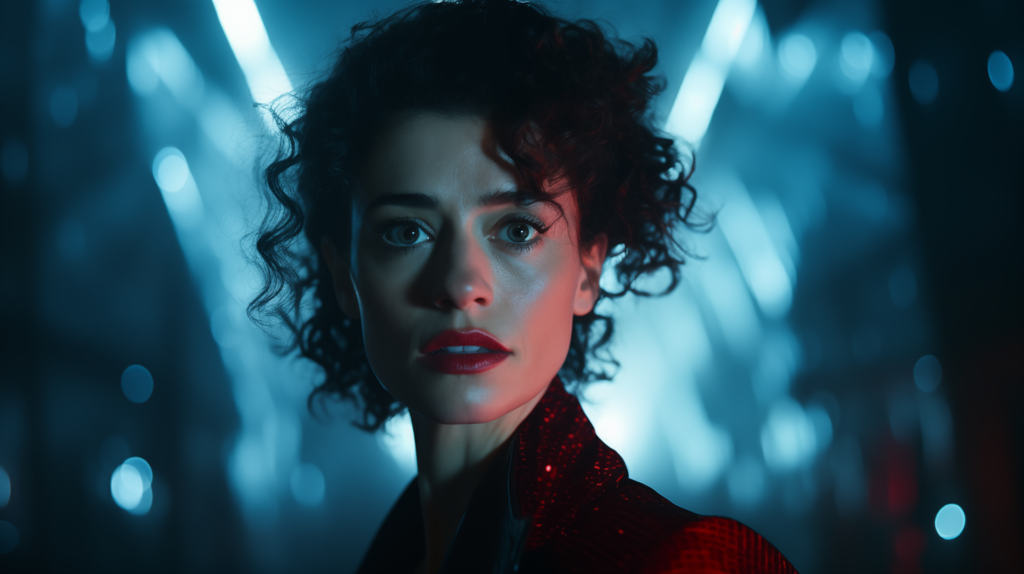Cinematic narration in photography has emerged as a powerful trend, blending the storytelling techniques of cinema with the visual artistry of photography. This approach goes beyond capturing single moments, aiming to tell a story through a series of images or even a single, powerful shot. In this article, we’ll explore the concept of cinematic narration in photography, its techniques, applications, benefits, and the tools available to achieve this style.
Understanding Cinematic Narration
Cinematic narration refers to the use of visual storytelling techniques borrowed from filmmaking to create photographs that evoke a narrative. This style focuses on creating images that convey a sense of drama, emotion, and story, often resembling stills from a movie. It involves careful consideration of composition, lighting, color grading, and subject matter to create a cohesive and compelling narrative.

Key Techniques in Cinematic Narration
Composition: Cinematic photography often employs wide shots, close-ups, and dynamic angles to create a sense of depth and movement. Techniques like the rule of thirds, leading lines, and framing are used to draw the viewer’s eye and convey the story.
Lighting: Lighting is crucial in creating mood and atmosphere. Cinematic photography often uses dramatic lighting setups, such as backlighting, side lighting, and chiaroscuro (the contrast between light and dark) to enhance the emotional impact of the image.
Color Grading: The use of color to set the tone and mood is a hallmark of cinematic narration. Color grading can be used to evoke specific emotions and themes, such as warm tones for nostalgia or cool tones for isolation.
Storytelling Elements: Props, costumes, and settings play a significant role in telling the story. Attention to detail in these elements helps to create a believable and immersive narrative.
Depth of Field: Shallow depth of field is often used to focus attention on the subject and create a cinematic look. This technique helps to isolate the subject from the background, adding depth and dimension to the image.

Applications of Cinematic Narration
Portrait Photography: Cinematic techniques can add depth and emotion to portrait photography, making the subject appear more dynamic and engaging.
Wedding Photography: Telling the story of a couple’s special day through cinematic narration can create memorable and emotionally powerful images.
Travel Photography: Capturing the essence of a location and the experiences of travel can be enhanced with cinematic storytelling, making the images more evocative and immersive.
Commercial and Fashion Photography: Creating a narrative around products or fashion can make advertisements more engaging and memorable.

Benefits of Cinematic Narration
Emotional Impact: Cinematic narration can evoke strong emotions, making the images more impactful and memorable for the viewer.
Engagement: A well-told visual story can captivate an audience, drawing them into the narrative and encouraging them to spend more time with the image.
Creativity: This approach allows photographers to explore new creative possibilities, pushing the boundaries of traditional photography.
Distinctiveness: Cinematic narration can help photographers stand out in a crowded market by offering a unique and compelling style.

Tools and Software for Cinematic Photography
Adobe Photoshop and Lightroom: These tools offer extensive capabilities for color grading, lighting adjustments, and composition enhancements to achieve a cinematic look.
Capture One: Known for its advanced color grading tools, Capture One is favored by many professional photographers for achieving a cinematic style.
VSCO and Presets: VSCO and other preset providers offer filters and presets specifically designed to create cinematic effects, simplifying the editing process.
Camera Equipment: High-quality lenses with wide apertures, such as prime lenses, can help achieve the shallow depth of field characteristic of cinematic photography. Additionally, using external lighting and reflectors can enhance the dramatic lighting effects.

Ethical Considerations
Authenticity: While cinematic narration emphasizes storytelling, it’s important to maintain the authenticity of the subjects and scenarios being photographed. Over-stylization can sometimes detract from the genuine essence of the moment.
Representation: Photographers should be mindful of how they represent their subjects, ensuring that the narrative is respectful and accurate.
Manipulation: The use of extensive post-processing and color grading should be balanced to avoid misrepresenting reality, especially in photojournalism and documentary photography.
Future Prospects
The future of cinematic narration in photography is bright, with ongoing advancements in technology and techniques. As AI and machine learning continue to evolve, they will likely play a significant role in enhancing cinematic effects and streamlining the editing process. Virtual reality (VR) and augmented reality (AR) could also offer new dimensions to cinematic storytelling, creating more immersive and interactive visual experiences.
Conclusion
Cinematic narration in photography is a powerful tool that combines the emotional depth and storytelling techniques of cinema with the artistic vision of photography. By mastering composition, lighting, color grading, and storytelling elements, photographers can create images that resonate deeply with viewers. As technology advances and new tools become available, the possibilities for cinematic narration will continue to expand, offering exciting opportunities for photographers to innovate and captivate their audiences.